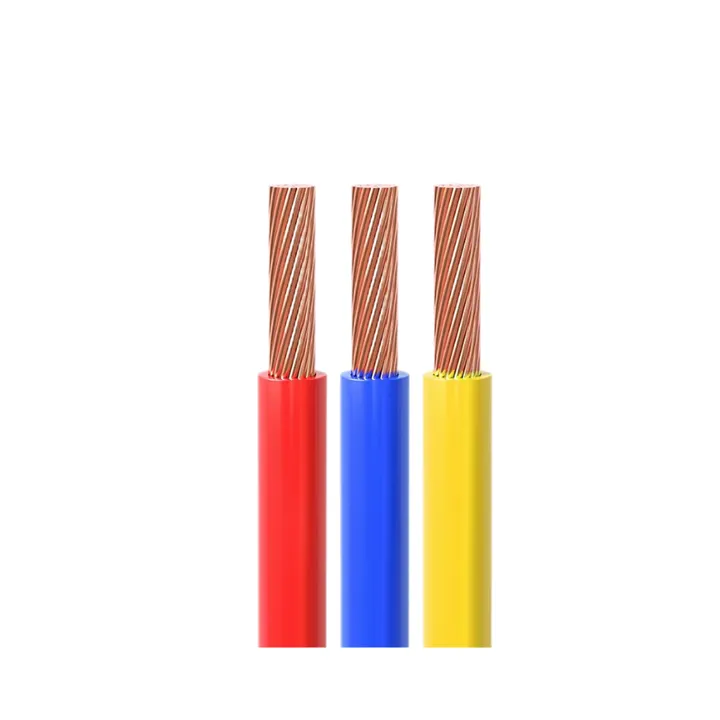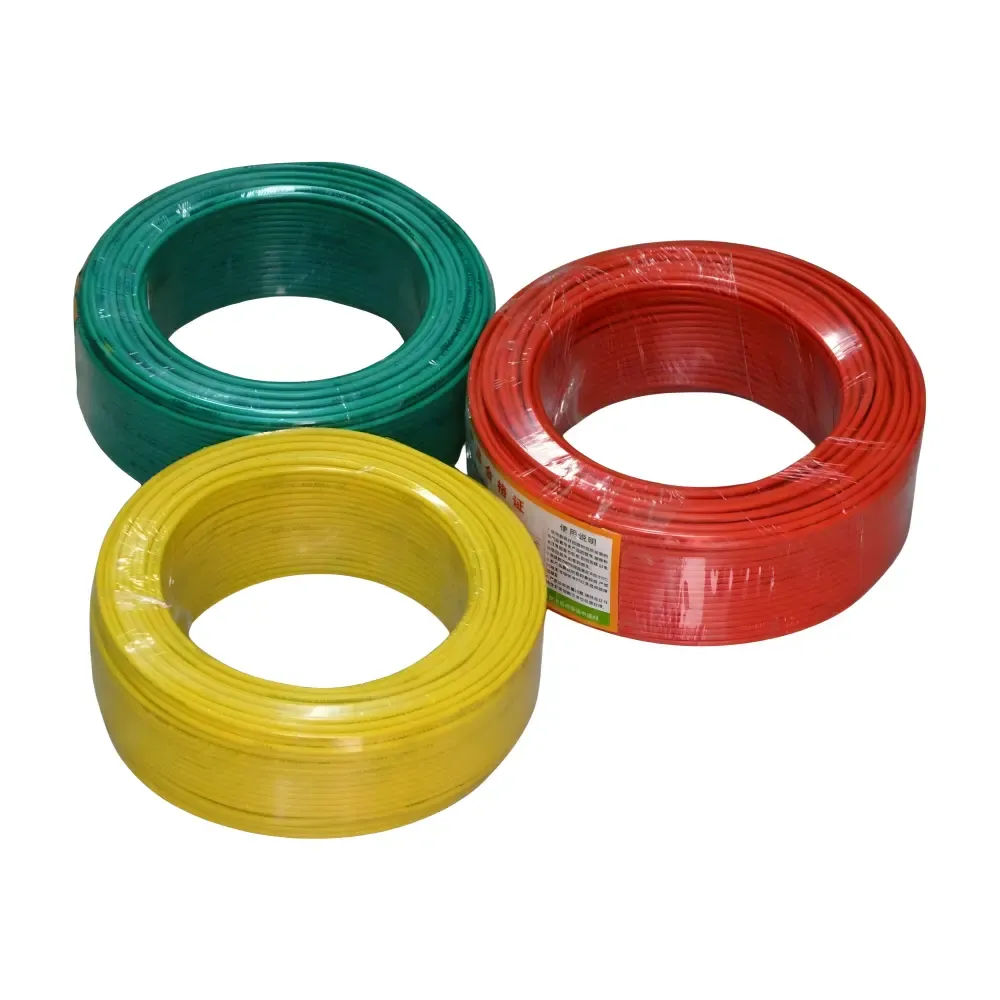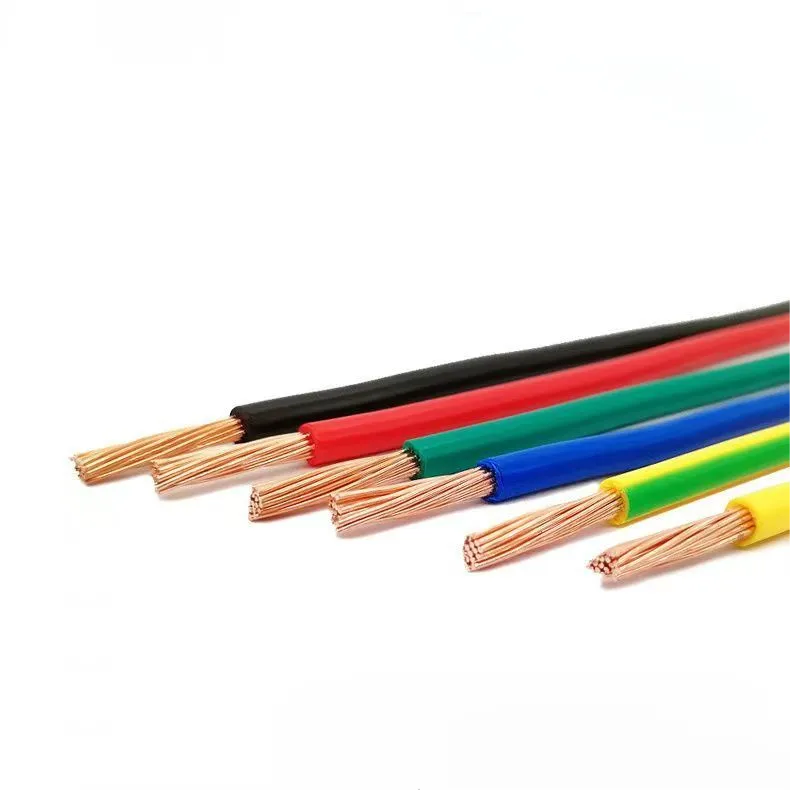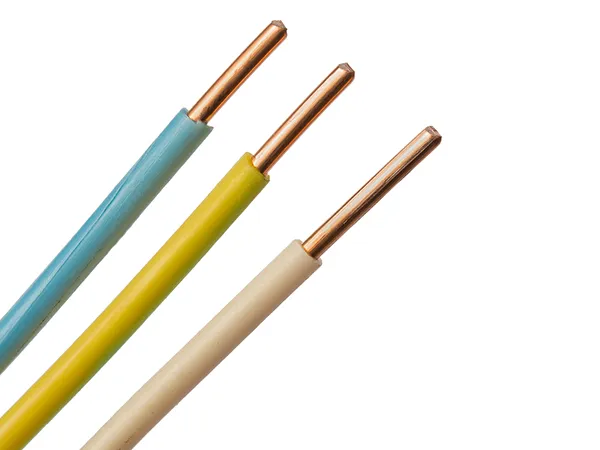PE vs. PVC Insulation for Electric Wires: Pros and Cons
Time: 2025-07-31 10:13:02
Source: Henan Province Jianyun Cable Co., Ltd.
Polyethylene (PE) and polyvinyl chloride (PVC) are two widely used insulation materials for electric wires in household and industrial applications. Each material offers distinct properties that influence its suitability for specific environments and requirements. This guide provides a comprehensive comparison of PE and PVC insulation, detailing their pros and cons, specifications, and selection considerations, presented in a formal and structured manner.
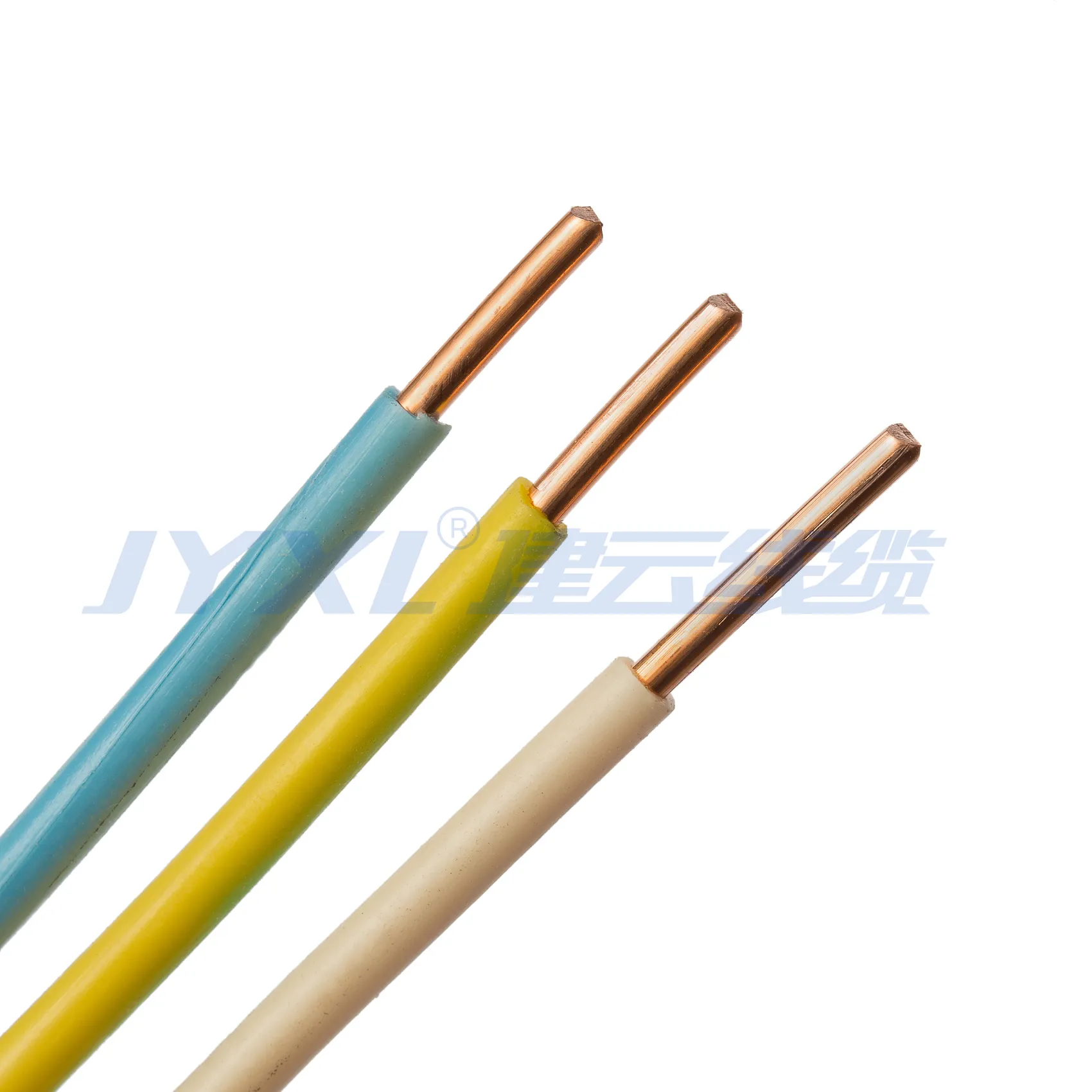
Table of Contents
1. Overview of PE and PVC Insulation
Insulation materials for electric wires protect conductors, prevent electrical leakage, and ensure safety in various environments. Polyethylene (PE), including high-density (HDPE) and low-density (LDPE) variants, and polyvinyl chloride (PVC) are common choices for insulating copper or aluminum conductors in low-voltage (e.g., 300/500 V or 450/750 V) applications. PE is a thermoplastic with excellent electrical and environmental resistance properties, while PVC is a versatile, cost-effective material widely used in household and industrial wiring.
2. Key Properties and Specifications
The properties of PE and PVC insulation determine their performance in electrical applications:
-
Electrical Properties:
-
PE: High insulation resistance (>1000 MΩ/km at 20°C), low dielectric constant (2.2–2.4), and excellent dielectric strength (20–30 kV/mm), ideal for minimizing electrical losses.
-
PVC: Good insulation resistance (>10 MΩ/km at 70°C), dielectric constant (3.5–5), and dielectric strength (15–20 kV/mm), suitable for general-purpose wiring.
-
Temperature Range:
-
PE: Typically -40°C to 80°C (HDPE up to 90°C), with short-term tolerance up to 100°C.
-
PVC: -15°C to 70°C, with short-term tolerance up to 160°C for standard formulations.
-
Environmental Resistance:
-
PE: Excellent resistance to moisture, UV radiation, and chemicals (e.g., acids, alkalis); poor flame retardancy unless treated.
-
PVC: Moderate moisture and chemical resistance; limited UV resistance; naturally flame-retardant but emits toxic fumes (e.g., hydrogen chloride) when burned.
-
Mechanical Properties:
-
PE: Flexible (especially LDPE), but less abrasion-resistant than PVC; susceptible to cracking under stress.
-
PVC: Good abrasion resistance, moderate flexibility (improved with plasticizers), and durable in fixed installations.
-
Cost:
-
PE: Generally more expensive due to specialized formulations and processing.
-
PVC: Cost-effective, widely available, and easier to manufacture.
|
Property
|
PE
|
PVC
|
|
Insulation Resistance
|
>1000 MΩ/km
|
>10 MΩ/km
|
|
Temperature Range
|
-40°C to 80°C
|
-15°C to 70°C
|
|
Environmental Resistance
|
High (moisture, UV, chemicals)
|
Moderate, flame-retardant
|
|
Mechanical Properties
|
Flexible, less abrasion-resistant
|
Abrasion-resistant, moderately flexible
|
|
Cost
|
Higher
|
Lower
|
3. Pros and Cons of PE Insulation
-
Pros:
-
Superior Electrical Properties: High insulation resistance and low dielectric constant reduce signal loss, ideal for high-frequency or long-distance applications.
-
Excellent Environmental Resistance: Resists moisture, UV, and chemicals, making it suitable for outdoor or underground installations.
-
Wide Temperature Range: Operates effectively in extreme cold (-40°C) and moderate heat (80–90°C).
-
Lightweight: Lower density than PVC, reducing cable weight in large installations.
-
Cons:
-
Poor Flame Retardancy: Requires additives to meet flame propagation standards (e.g., IEC 60332-1), increasing costs.
-
Lower Abrasion Resistance: More prone to mechanical damage, requiring protective conduits in rugged environments.
-
Higher Cost: More expensive due to material and processing requirements.
-
Stress Cracking: Susceptible to environmental stress cracking under prolonged mechanical stress.
|
PE Insulation
|
Details
|
|
Pros
|
High insulation resistance, environmental resistance, wide temperature range
|
|
Cons
|
Poor flame retardancy, lower abrasion resistance, higher cost
|
4. Pros and Cons of PVC Insulation
-
Pros:
-
Cost-Effective: Widely available and inexpensive, ideal for budget-conscious projects.
-
Flame Retardancy: Naturally flame-retardant, meeting standards like IEC 60332-1 without additives.
-
Good Mechanical Strength: Resists abrasion and impact, suitable for fixed installations in conduits or walls.
-
Versatile: Can be formulated with plasticizers for flexibility (e.g., H05VV-F cables) or rigidity for fixed wiring.
-
Cons:
-
Limited Environmental Resistance: Susceptible to UV degradation and less resistant to moisture or chemicals unless specially treated.
-
Toxic Fumes: Emits hydrogen chloride and other toxic gases when burned, posing risks in fire-prone areas.
-
Narrower Temperature Range: Limited to -15°C to 70°C, less suitable for extreme conditions.
-
Higher Dielectric Losses: Higher dielectric constant increases signal loss in high-frequency applications.
|
PVC Insulation
|
Details
|
|
Pros
|
Cost-effective, flame-retardant, good mechanical strength
|
|
Cons
|
Limited environmental resistance, toxic fumes, narrower temperature range
|
5. Applications
PE and PVC insulation are suited to different applications based on their properties:
-
PE Insulation:
-
Outdoor/Underground Wiring: Used in direct-buried or conduit-protected cables (e.g., power distribution) due to moisture and UV resistance.
-
High-Frequency Cables: Suitable for data or communication cables (e.g., coaxial, Ethernet) due to low dielectric constant.
-
Harsh Environments: Ideal for industrial or agricultural settings with chemical or moisture exposure.
-
PVC Insulation:
-
Household Wiring: Used in fixed installations (e.g., H05V-U, H07V-R) for lighting and outlets in dry, indoor environments.
-
Appliance Cords: Flexible PVC in multi-core cables (e.g., H05VV-F) for portable devices like lamps or fans.
-
Control Circuits: Used in low-voltage control systems in residential or commercial buildings.
|
Insulation Type
|
Primary Applications
|
|
PE
|
Outdoor/underground wiring, high-frequency cables, harsh environments
|
|
PVC
|
Household wiring, appliance cords, control circuits
|
6. Selection Criteria
Choosing between PE and PVC insulation depends on the following factors:
-
Environmental Conditions:
-
Select PE for outdoor, underground, or chemical-exposed installations.
-
Choose PVC for indoor, dry environments with minimal UV or chemical exposure.
-
Electrical Requirements:
-
Use PE for high-frequency or long-distance circuits requiring low dielectric loss.
-
Opt for PVC for general-purpose low-voltage wiring (e.g., 300/500 V or 450/750 V).
-
Safety Requirements:
-
Choose PVC for flame-retardant needs in fire-sensitive areas, but ensure proper ventilation to mitigate toxic fumes.
-
Use flame-retardant-treated PE for outdoor applications requiring fire safety.
-
Mechanical Needs:
-
Select PVC for fixed installations requiring abrasion resistance.
-
Use PE (LDPE) for flexible applications or where lightweight cables are needed.
-
Cost Constraints:
-
PVC for budget-conscious projects; PE for specialized applications justifying higher costs.
|
Criterion
|
PE
|
PVC
|
|
Environment
|
Outdoor, chemical exposure
|
Indoor, dry
|
|
Electrical
|
High-frequency, low loss
|
General-purpose
|
|
Safety
|
Needs flame-retardant treatment
|
Flame-retardant, toxic fumes
|
|
Cost
|
Higher
|
Lower
|
7. Challenges and Solutions
|
Challenge
|
Solution
|
|
PE: Poor Flame Retardancy
|
Use flame-retardant additives or sheathing (e.g., PVC or LSZH)
|
|
PVC: Toxic Fumes
|
Use low-smoke, zero-halogen (LSZH) alternatives in fire-sensitive areas
|
|
PE: Mechanical Weakness
|
Protect with conduits or robust sheathing in high-abrasion areas
|
|
PVC: UV Degradation
|
Use UV-resistant sheathing or conduits for outdoor installations
|
8. Conclusion
PE and PVC insulation offer distinct advantages for electric wires, with PE excelling in environmental resistance and electrical performance for outdoor or high-frequency applications, and PVC providing cost-effective, flame-retardant solutions for indoor household wiring. By evaluating environmental conditions, electrical requirements, safety needs, and cost constraints, users can select the appropriate insulation type. Addressing challenges like PE’s poor flame retardancy or PVC’s toxic fumes through additives or protective measures ensures safe and reliable installations, supporting a lifespan of 25–30 years in household and industrial settings.

